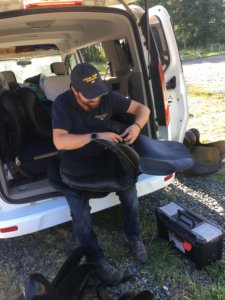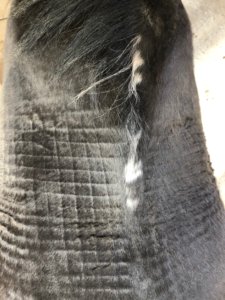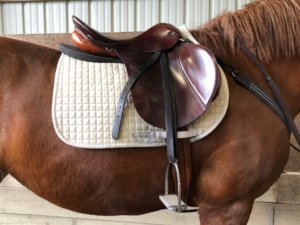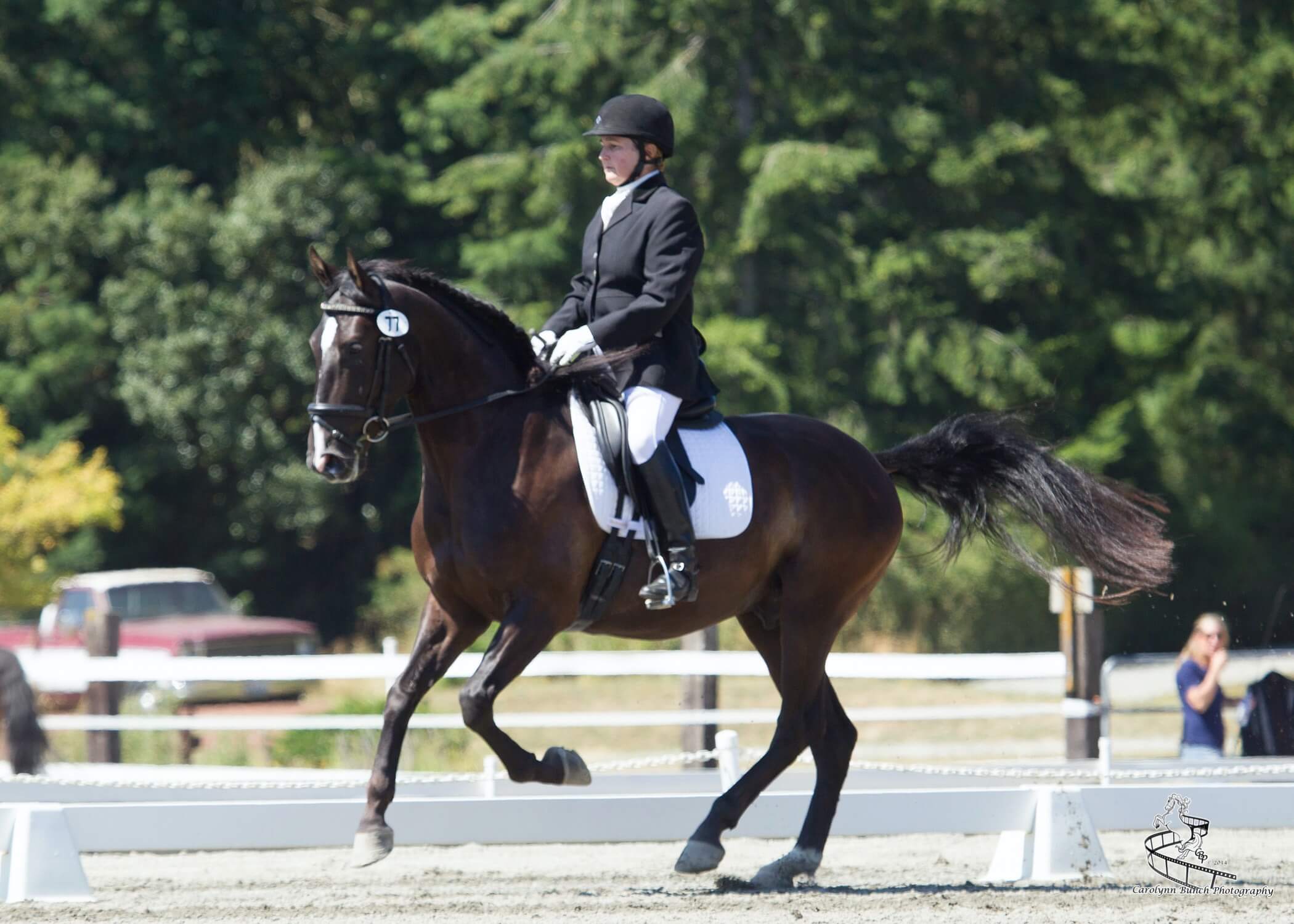The conversation goes something like this: “I’m trying out a new dressage saddle. Will you let me know if it works for my horse?”
This is when I start to get a little uncomfortable. I always answer, “Yes, but I’m not a saddle fitter; I’m a riding instructor.”
I do think a trainer should be able to tell when a saddle is causing a problem for either horse or rider. Assessing tack is part of our job, but a good saddle fitter is going to have a better “eye” and solve problems more easily than a trainer — especially in the case of English saddles. It’s a good idea to use a saddle fitter when you purchase a saddle. Most saddle fitters are representatives of certain brands of saddles, but some do carry multiple brands of new and used saddles.
That being said, I’ve learned a few things about saddle fit in my years as a trainer/instructor. Saddle fit issues can be generalized to all types of saddles, but English saddles have some specific issues that are worth noting.

Stuffed Panels
The most notable difference between English and Western saddles is that English saddles have stuffed panels that run along the horse’s back on either side of the spine. Besides the tree width and shape, the panels’ shape and depth impact saddle fit in important ways. Saddles must be balanced from front to back and side to side and the panels are what do this. Two horses might both need a medium-wide tree but have very differently shaped backs. The panels’ shape and depth are what help with this difference, and the width of the channel between the two panels can be incredibly important as well.
Panels are stuffed with wool or foam. If stuffed with foam, what you have is what you get; there’s no changing them and fit can only be altered through the addition of adding padding under the saddle. When we add pads, we sometimes lose saddle stability and the desired close-contact feel.
If stuffed with wool, saddles can be “flocked” to fit. Wool can only be added if the panels offer sufficient space to add more. Wool can always be removed. Fitters add or remove wool by removing stitching in the saddle panel and then using a special tool that pushes wool in or pulls some out. They then pound down the panels with a mallet until all is smooth again.
Wool flocking always settles and changes over time, as does your horse’s back. Generally, it’s advised that a saddle needs to see a fitter every year or so. Newer saddles change faster than older more compact ones.
Saddle Fit Basics
Saddle fit needs to be checked in motion. Although you can measure for tree width and see if a saddle’s fit is close just by setting it on a horse’s back, many things change when you girth up, put a rider in the saddle, and the horse starts to move. Don’t buy a saddle without trying it in all three gaits.
Saddles should not slide forward, backward, or roll. Does your saddle slide up your horse’s neck? Backward? If yes, the saddle doesn’t fit your horse. If you struggle to find the middle of your horse’s back this might be a saddle fit problem too, but it also might be a rider skill issue. A well-fitted saddle makes a correct position easier to find.
Listen when your horse is screaming. Does your horse pin his ears, grind his teeth, and run away when he sees you come with the saddle or start to girth him up? Does he brace himself or leave town when you try to mount? Does he hump his back or refuse to move forward after you mount? These are just a few of the ways your horse might be telling you his saddle hurts. Pay attention and don’t assume his behavior is “bad”.

Roughed-up hair and white spots mean there’s a problem. As soon as you see white hairs growing in under your saddle, get help. When you remove your horse’s saddle always check for areas where the hair has been rubbed in your ride. Hair should lie evenly flat and sweat marks should be relatively equal from side to side.
If you see unevenness in sweat marks or roughed-up hair on one side, get up on something high, like a mounting block, stand your horse square and see if his back and shoulders look symmetrical. Unfortunately, the horse might be crooked and not the saddle. This is a conformation, training, or soundness problem that will definitely affect how your saddle fits your horse. All horses have some asymmetry, just like people. Severe asymmetry makes saddle fit a challenge.
Conformation issues make saddle fit difficult. These include mutton withers, downhill conformation, swayback, high withers, big shoulders, round back, etc. Remember, horses can change a lot from season to season. A significant weight loss or gain, a layoff, or a young horse’s withers coming in might mean you need a new saddle or a visit from the saddle fitter.
How Your Instructor Can Help
Balance. Beyond the obvious things that can be seen from the ground, like a pommel too close to the withers, your instructor should be able tell you a lot by riding your horse in your saddle. Mostly, this has to do with feeling balanced (or unbalanced) over the horse.
The difference between a training problem and a saddle fit problem. Horses give subtle signs of pain you might be missing. A good trainer should be able to spot saddle fit/back pain fairly quickly.

Dangerous saddle/tack problems. Ultimately, this is the rider’s responsibility, but listen to your instructor/trainer if they say you have a problem that needs to be addressed, like worn billets or stirrup leathers.
Finding a brand. Many instructors have experience with a variety of saddle brands and can help you select one that might best work for your horse. Professionals often have their personal favorites, but it’s important they look past their preferences and help you find a saddle that’s perfect for you and your horse. Many trainers organize saddle fittings in their barns a few times per year and this can help get you on the road to finding the best saddle for you and your horse.

Kim Roe grew up riding on the family ranch and competed in Western rail classes, trail horse, reining, working cow, and hunter/jumper. She trained her first horse for money at 12 years old, starting a pony for a neighbor.
Kim has been a professional dressage instructor in Washington state for over 30 years, training hundreds of horses and students through the levels. In recent years Kim has become involved in Working Equitation and is a small ‘r’ Working Equitation judge with WE United.
Kim is the editor of the Northwest Horse Source Magazine, and also a writer, photographer, and poet. She owns and manages Blue Gate Farm in Deming, Washington where she continues to be passionate about helping horses and riders in many disciplines.






